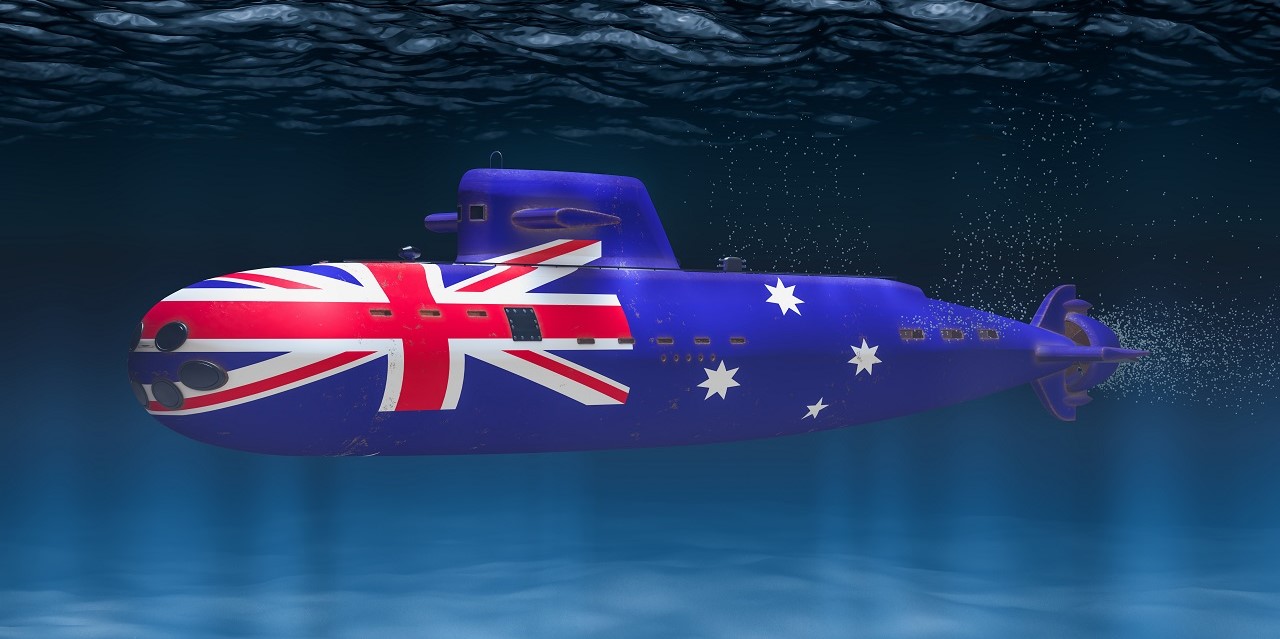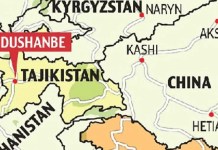In another possible blow to Australia’s fate in the nuclear submarine AUKUS pact, US naval officials have cited bottlenecks at American shipyards for constructing the nuclear-powered submarines for Canberra.
Will Provide Military Base To US During China-Taiwan Conflict – Another Country Joins Bandwagon Against Beijing But With A Caveat
Akin To Fighter Pilots, US Army To Get Futuristic Combat Googles That Can Go Beyond The Human Limits
The Americans are already aiming at “reducing the build-time” of their ballistic missile capable (SSBN) USS Columbia nuclear submarine at overburdened shipyards like the General Dynamics Electric Boat (GDEB) in Connecticut.
This comes after Australian Defense Minister Richard Marles’ statement in July about “hi-tech arms” like cruise missiles being “more important” than “nuclear submarines.”
Following Marles’s statement, previous analysis by EurAsian Times also touched upon the possible overburdened order book at US shipyards. The submarine meant for Australia is expected to be a version of the USS Virginia-class nuclear attack submarine (SSN).
The latest statement was made by Rear Admiral Scott W. Pappano, Program Executive Officer, Strategic Submarines, at an interaction with the Mitchell Institute for Aerospace Studies on Nuclear Deterrence and Missile Defense Forum. Pappano also discussed the D-5/2 Submarine Launched Ballistic Missile (SLBM) modernization program.
The AUKUS deal was announced on September 15 last year under then Prime Minister Scott Morrison in a secret agreement with Washington and London that envisages Australia acquiring at least eight nuclear submarines.
Aimed at countering China’s growing naval presence in the Indian Ocean Region (IOR) and assertiveness in the East and South China Seas, the AUKUS pact also led to the cancellation of Australia’s existing deal with France’s Naval Group to build conventionally powered diesel-electric submarines (SSK).
These were based on the ‘Scorpene’ class boats built locally by Indian shipyards (rechristened the Kalvari-class) or the nuclear-powered Barracuda design. It is unclear which of the two was the final design.
The surprise announcement led to a massive diplomatic fallout between Paris and Canberra and Paris and Washington, with the French Foreign Minister Jean-Yves le Drian calling it a “stab in the back.” But the deal’s biggest drawback is the monetary, operational, and technical challenges more than the political repercussions.
Busy US & UK Shipyards
Pappano said at the interaction, “If we were going to add additional (Australian) submarine construction to our base, that would be detrimental right now. I think that exists for both US and the UK.”
The Columbia-class SSBN is a massive priority for the US Navy, aimed to replace the aging Ohio-class vessels scheduled for their first delivery by 2027. At 580 feet in length and displacing 20,810 feet, they will be the largest submarines built in the US, expected to stay in service until the 2080s.
Pappano’s concern was reducing the build time from 84 months to 78 months to reduce potential gaps as the existing 14 Ohio-class submarines are phased out from service. The USN wants a total of 12 Columbia-class boats.
But the shipbuilder has been struggling with building the submarines faster, according to Pappano. “We have worked on (planning for) a 78-month delivery schedule; we are behind that now [and] still at 84 months,” Pappano said.
The industrial issues are a larger part of the decline in US manufacturing over the last several decades, depending on massive imports for many of its goods from countries like China, where factories had moved to cut costs.

The American economy, meanwhile, became more service oriented and ran a massive trade deficit with most nations – importing more and exporting less.
This was allowed by a strong Dollar, owing to its position as the world’s reserve currency. The Covid-19 pandemic and resultant lockdowns disrupted supply chains and labor markets too.
Even British shipyards like the BAE Systems Barrow-in-Furness cannot spare capacity. They are already swamped with building the last two boats of the Astute-class hunter-killer submarines, beginning with the first in the fleet of four new SSBNs meant to replace the HMS Vanguard-class vessels.
AUKUS No Good For Australia?
This hurdle comes amidst a few other diplomatic and military impediments faced by the AUKUS pact. These are Prime Minister Anthony Albanese’s government’s outreach to China, technical shortcomings with the USS Virginia-class nuclear submarines, and; oversight of the International Atomic Energy (IAEA) regarding the use of nuclear propulsion material.
The US Virginia class attack submarine version will not be operationally available until the early 2040s and the last vessel by 2060. The extended timeline that will leave the Royal Australian Navy without serious undersea capability calls for a stopgap interim arrangement. It could be an improved version of the Swedish-origin Collins-class ship to bridge the looming capability gap.
The Virginia class has been afflicted with maintenance problems and, over the last 33 years, has only performed 15 six-monthly deployments. Conventionally powered submarines are now commonly equipped with air-independent propulsion (AIP), which makes them quieter. The latter must keep their reactor cooling pumps going and use noisy giant meshing gears between the steam turbines and propellers.

Nuclear submarines can also be detected by their constant release of hot water by leaving wakes on the surface when running at high speeds. A section of naval strategists within the US has been making a case for a return to diesel-electric or AIP-powered boats, given the technological improvements that have enhanced their speed, submerged endurance, and diving depths.
Diesel-electrics and AIP SSKs like the Swedish Gotland class or the Indian Navy’s Russian origin Kilo-class have also ‘sank’ US carriers often in exercises. Worse, the nuclear propulsion of the Virginia-class is not suitable in the littoral, shallow waters of the South and East China Seas.
Only its steering and control mechanism has been customized for the different geography, with the introduction of the fly-by-wire ship control.
Naval bases in the first island chain around China like Guam, Subic Bay, Singapore, and Okinawa already provide proximity making attributes like range and endurance irrelevant, making conventional submarines more suited for the task.
The cost of the project also dwarfs Australia’s financial wherewithal. Australia’s defense budget this financial year stood at $48.6 billion.
The nuclear diplomatic wrangling with the International Atomic Energy Agency (IAEA) is another issue, as it prohibits the transfer of fissile material from a country’s civilian nuclear program for nuclear submarines.
Foreign Minister Penny Wong assured IAEA chief Rafael Grossi on July 4 that Canberra’s “total commitment” to nuclear non-proliferation portends tough nuclear diplomacy.
- The author can be reached at satamp@gmail.com
- Follow EurAsian Times on Google News




